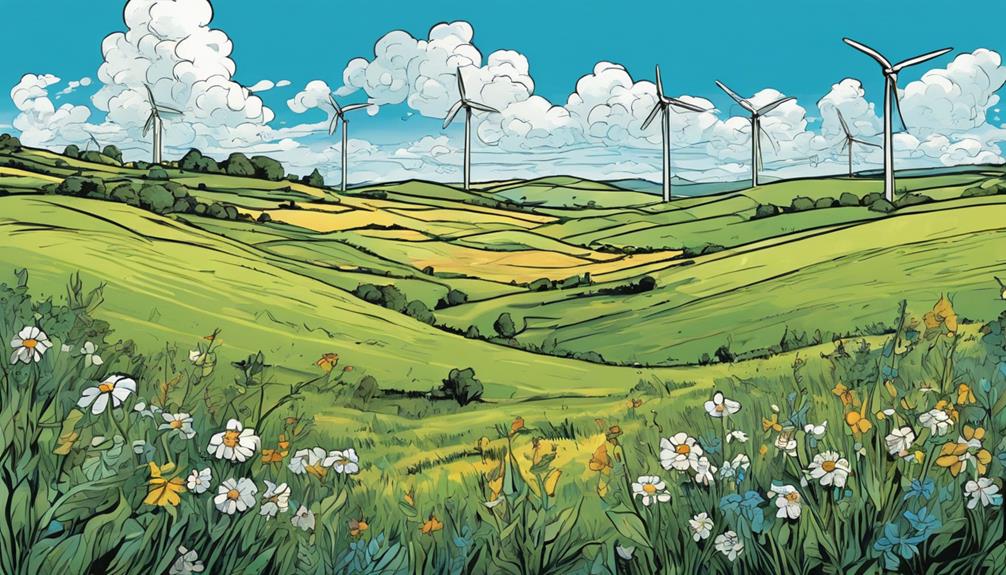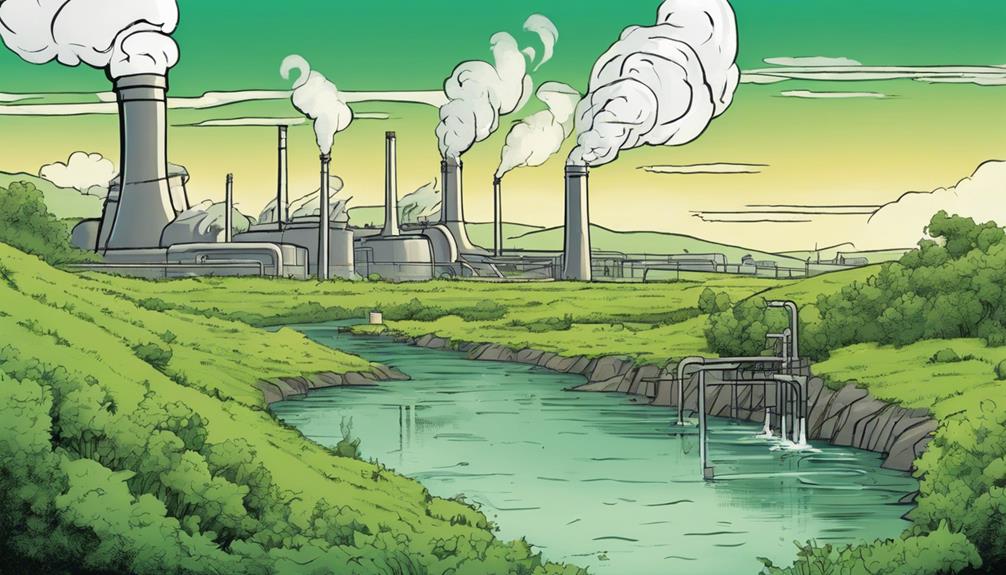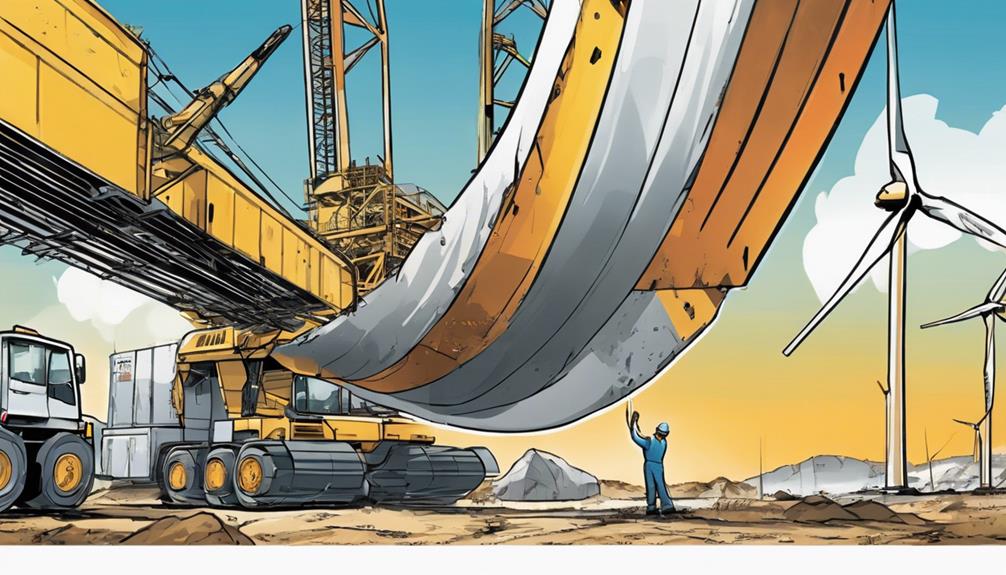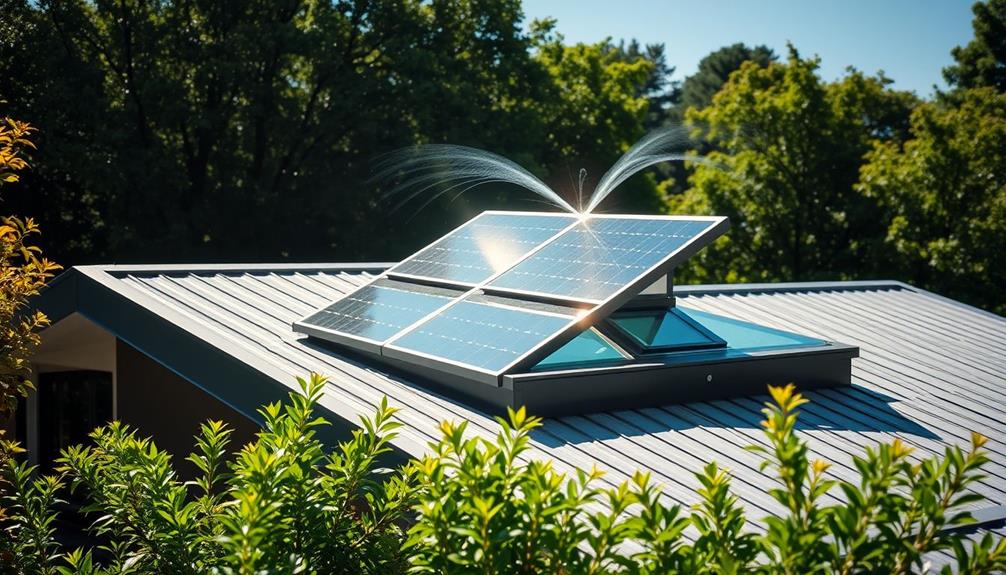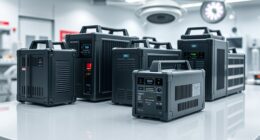I'm curious about harnessing wind power on my property, and I've learned it's essential to assess my land's unique wind resources. To do this, I need to identify wind patterns, use anemometers to gather data, and determine the best turbine placement. Next, I'll analyze the data to estimate energy output and inform my decision-making process. Understanding permitting compliance, evaluating cost incentives, choosing the appropriate turbine size, and ensuring proper installation and maintenance are also key. As I explore my property's potential, I'm excited to uncover the opportunities and challenges that lie ahead.
Key Takeaways
- Identify wind resources on your property to determine feasibility and optimal turbine placement.
- Research local regulations and obtain necessary permits to ensure compliance with zoning and environmental laws.
- Assess energy needs and wind speed to select the appropriate turbine size for maximum energy production.
- Calculate potential savings on electricity bills and explore government rebates and tax incentives to offset upfront costs.
- Regular maintenance checks and monitoring turbine performance are crucial to ensure optimal energy output and warranty compliance.
Assessing Wind Potential
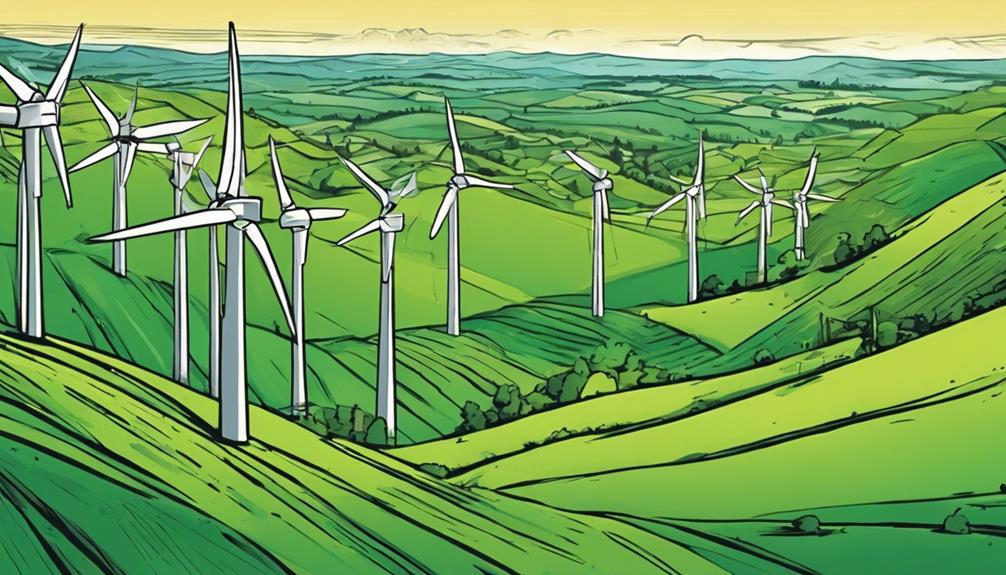
Before investing in a wind turbine, I need to determine if my property has sufficient wind resources to make it a practical option.
To do this, I'll assess wind speed and direction on my property. I'll use anemometers to gather wind data, which will assist me in identifying the best locations for turbine placement.
Analyzing this data will also reveal the optimal turbine height and orientation to maximize energy output. By considering local wind patterns and turbine height, I can optimize I'm getting the most out of my wind turbine.
This essential step will help me determine whether wind power is a feasible option for my property and inform my decision-making process moving forward.
Understanding Permitting Compliance
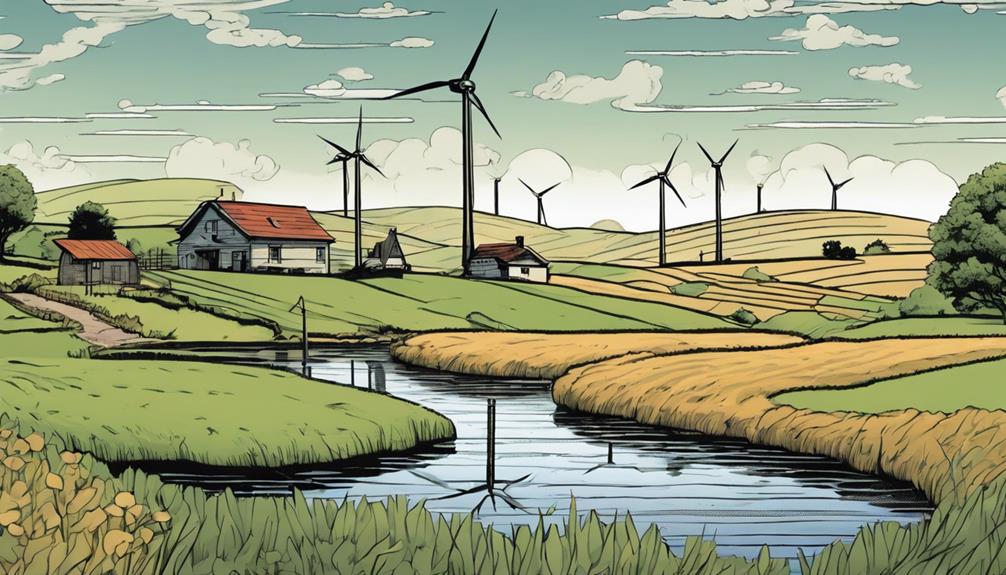
I'll need to navigate the complex web of local regulations and permits to guarantee my wind turbine project complies with all requirements. Understanding permitting compliance is crucial to avoid costly delays or even project cancellation. To ensure a smooth process, I'll research and comply with local permitting requirements, obtaining necessary permits and licenses. I'll submit detailed project plans and conduct environmental impact assessments to evaluate the effects on the environment and wildlife.
| Permitting Requirements | Description |
|---|---|
| Building Permit | Approval for turbine installation and construction |
| Environmental Permit | Assessment of potential environmental impacts |
| Zoning Permit | Compliance with local land-use regulations |
Evaluating Cost Incentives
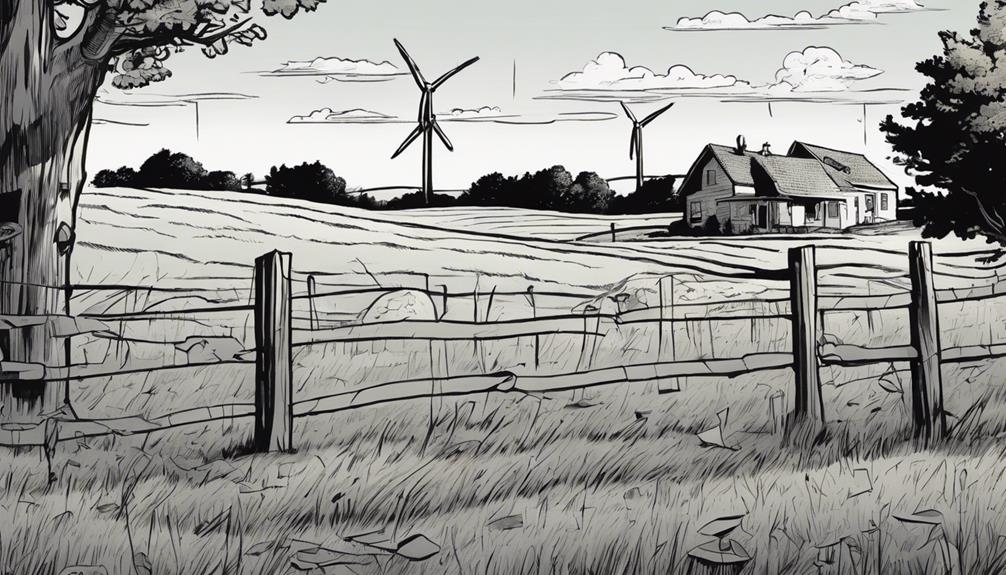
With wind turbine installation costs ranging from $2,000 to $5,000 per kilowatt, taking into account upfront investments and calculating potential savings on electricity bills is vital.
As I evaluate the cost incentives for my wind power project, I'm excited to explore the financial benefits. Here are three key factors to keep in mind:
- Government Rebates and Tax Incentives: I can claim a federal tax credit of up to 30% of the total project cost, significantly reducing my initial investment.
- Long-term Financial Benefits: By generating my own electricity, I can save up to 50% on my energy bills, resulting in substantial long-term savings.
- Offsetting Upfront Costs: With government incentives and long-term savings, I can offset the initial investment and enjoy a strong return on investment.
Choosing Turbine Size Wisely
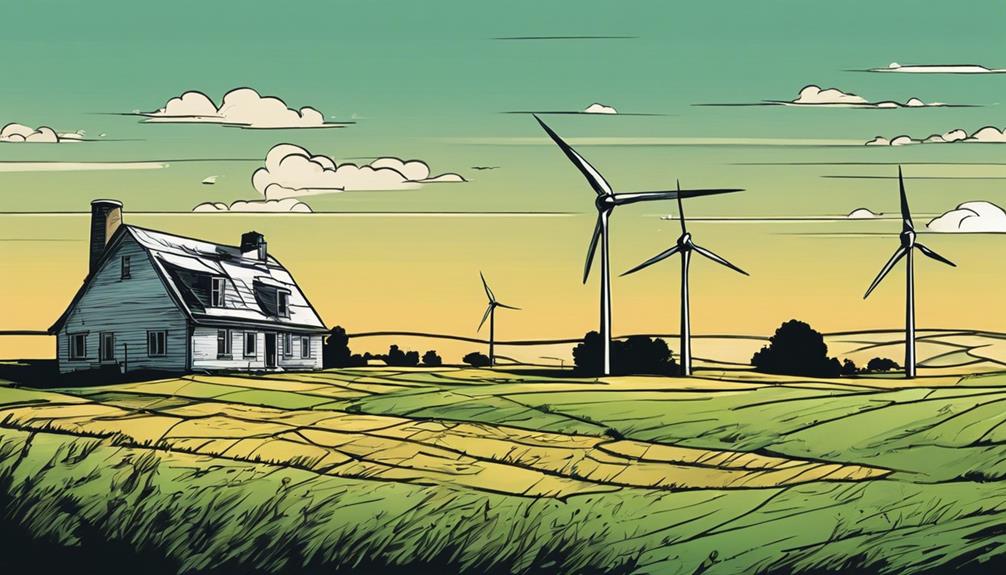
As I assess my energy needs and average wind speed, I'm focused on selecting the right turbine size to maximize energy production and return on investment.
The turbine size I choose will greatly impact the effectiveness of my wind power system. I need to contemplate the available land area and local regulations that may restrict turbine size.
For residential use, a smaller turbine is often sufficient, while commercial applications may require larger turbines.
I'll work with a professional to determine the most suitable turbine size for my property, ensuring it's tailored to my specific energy needs.
Installation Maintenance Essentials
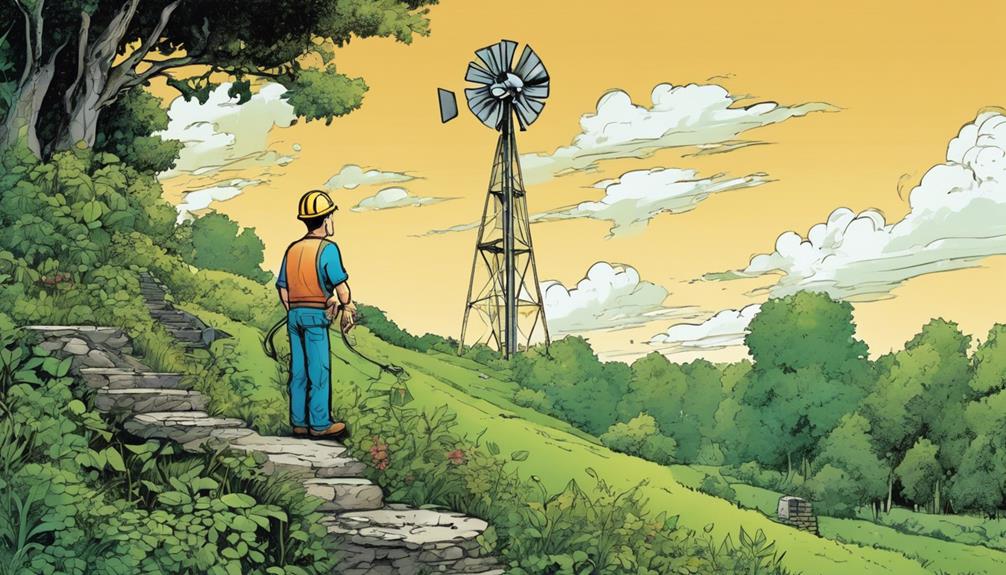
Proper installation and regular maintenance are important to guaranteeing my wind turbine operates at peak performance, maximizing energy production and minimizing downtime. I've learned that hiring qualified professionals for the installation is vital for a safe and efficient setup.
Once installed, regular maintenance checks are necessary to identify and address any potential issues before they become major problems.
Here are some key maintenance essentials to keep in mind:
- Schedule regular checks: Regular maintenance checks help ensure my turbine is running smoothly and efficiently.
- Monitor performance: Keeping an eye on my turbine's performance helps me identify any issues early on.
- Comply with warranty requirements: Regular maintenance is often required to maintain warranty validity, so it's crucial to stay on top of it.
Frequently Asked Questions
Can I Install a Wind Turbine on a Rented Property?
"I'm interested in installing a wind turbine on a rented property, but I'll need to check my lease agreement and obtain my landlord's permission, as they may have concerns about property modifications or liability."
How Does Wind Turbine Noise Impact Nearby Residential Areas?
Like a constant whisper in my ear, wind turbine noise can be a concern. I'd assess the decibel level, distance, and topography to guarantee it doesn't disturb nearby residents, and consider noise-reducing designs or placements.
Are There Any Grants for Community-Based Wind Energy Projects?
"Yes, there are grants for community-based wind energy projects. I've researched programs like the USDA's Rural Energy for America Program and the Department of Energy's Wind Energy Technologies Office grants."
Can I Sell Excess Energy Generated Back to the Grid?
"Yes, I can sell excess energy generated back to the grid through a process called net metering, where my utility company gives me credit for the excess energy I produce."
How Often Do Wind Turbines Need to Be Replaced or Upgraded?
"An ounce of prevention is worth a pound of cure." On average, wind turbines need to be replaced or upgraded every 20-25 years, depending on usage and maintenance. Regular checks can extend their lifespan.
How Can Wind Power be Utilized to Prevent Gas Leaks in Residential Properties?
Wind power can be a key element in vital gas leak prevention measures for residential properties. By utilizing wind energy to power efficient and reliable gas detection systems, homeowners can effectively monitor and prevent gas leaks, ensuring the safety of their families and properties.
Conclusion
As I reflect on my journey to access wind power, I'm reminded that every small step counts.
Did you know that a single wind turbine can power up to 1,400 homes annually? It's a staggering statistic that puts into perspective the impact we can have on the environment.
By harnessing the power of wind, I'm not only reducing my carbon footprint but also contributing to a cleaner, greener future – and that's a breeze worth feeling.
